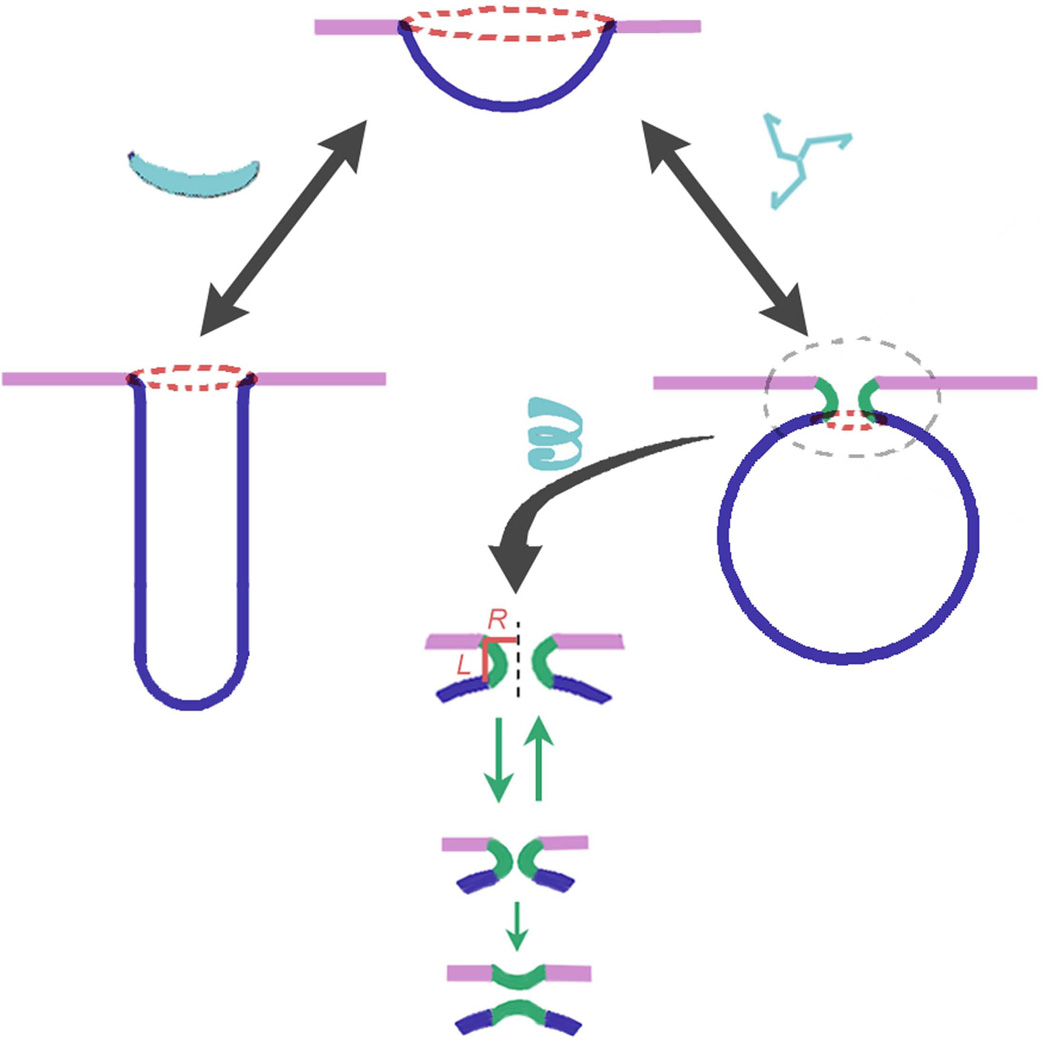Figure 4.
Evolution of MOD. Similar cap-like precursors can develop into tubular or spherical MODs dependently on the MOD composition and forces acting on the MOD. Elongated proteins or membrane-binding protein domains, such as BAR [refs], situated along one of the principle directions on the membrane surface (see Figure 3) lead to cylindrical MOD, while more round-like proteins, e.g. clathrin triskelia, do not distinguish the principal directions leading to spherical MOD. Evolution of the spherical MOD inevitably leads to the appearance of the new MOD, the neck. For fluid-like domains, the neck formation is promoted by the line tension on the MOD edge (red ring): the line tension enforce the lessening of the edge leading to the closure of the spherical MOD. The length of the neck MOD (L) is proportional to its radius (R), this proportionality defines the evolution of this MOD towards thin and short membrane neck, an established intermediate in fusion and fission reactions.

